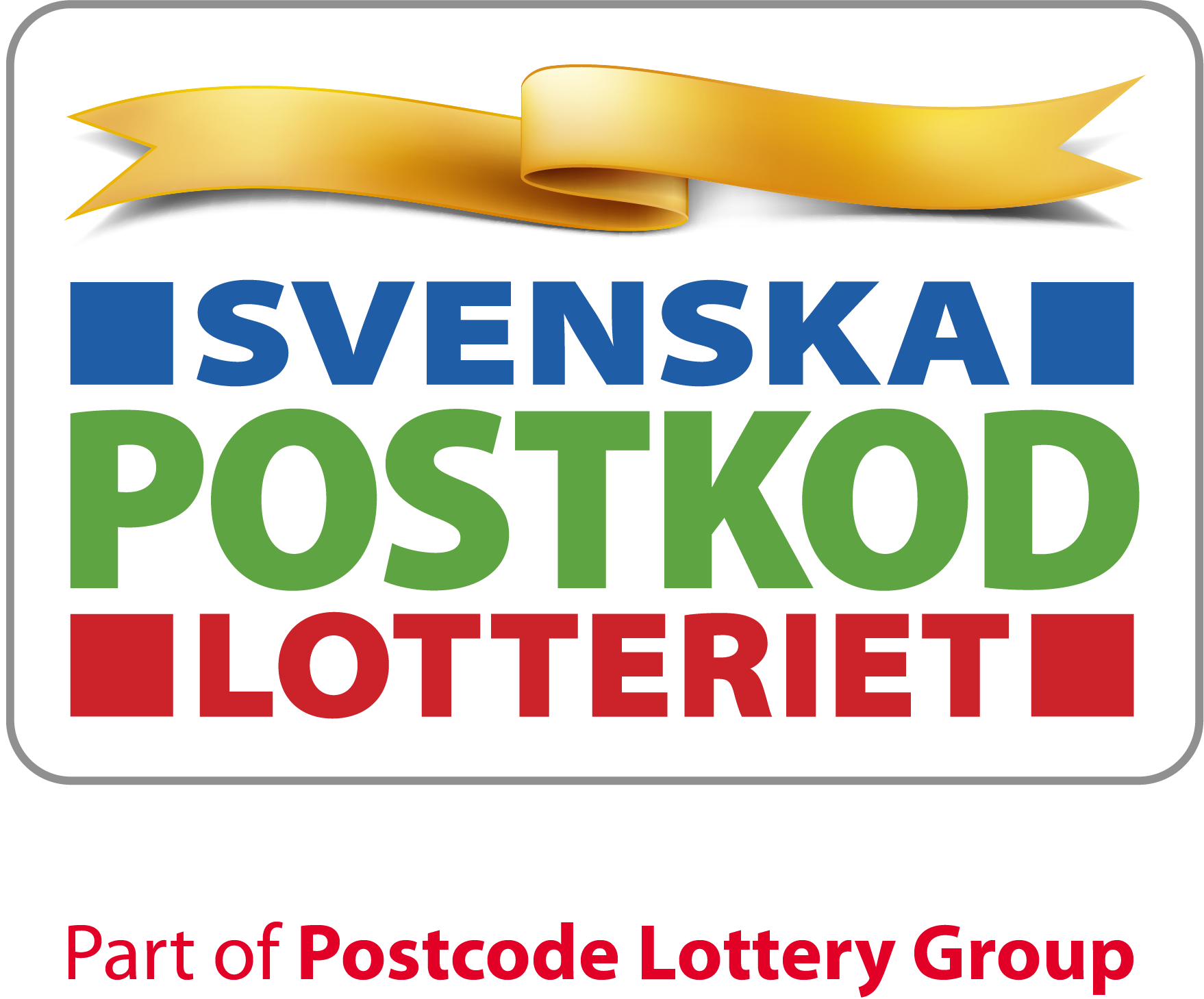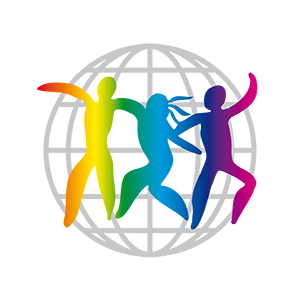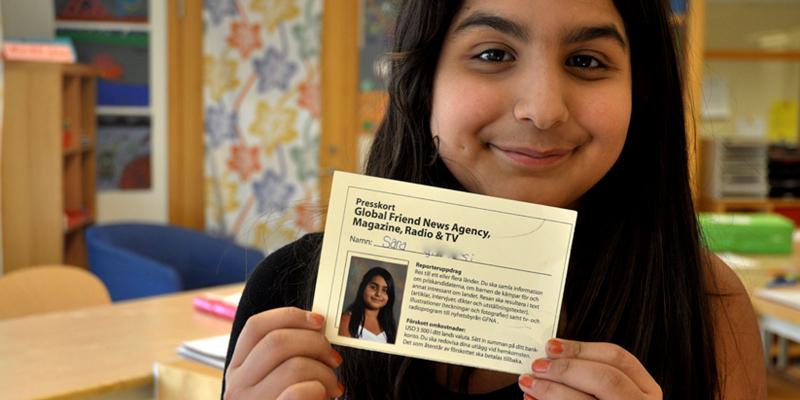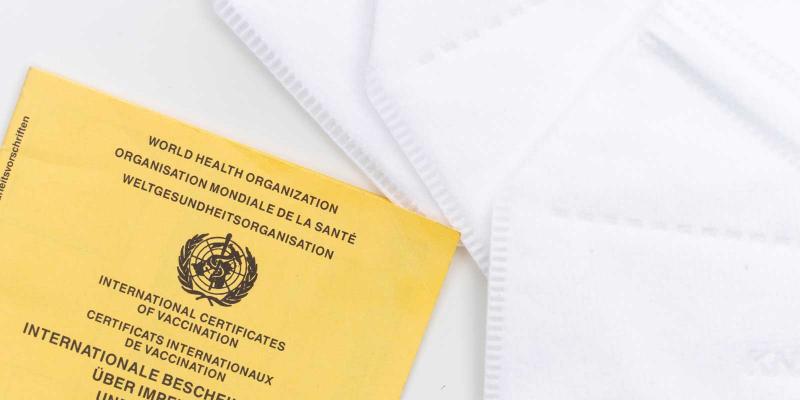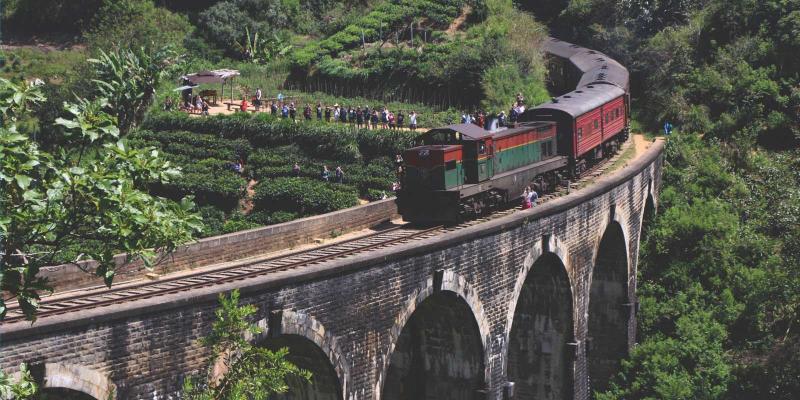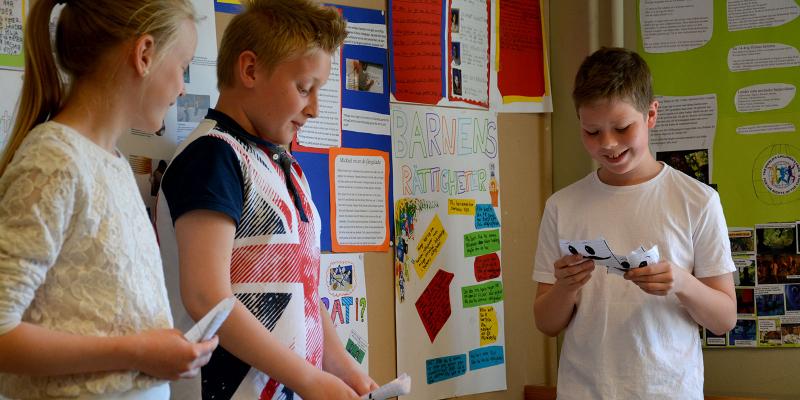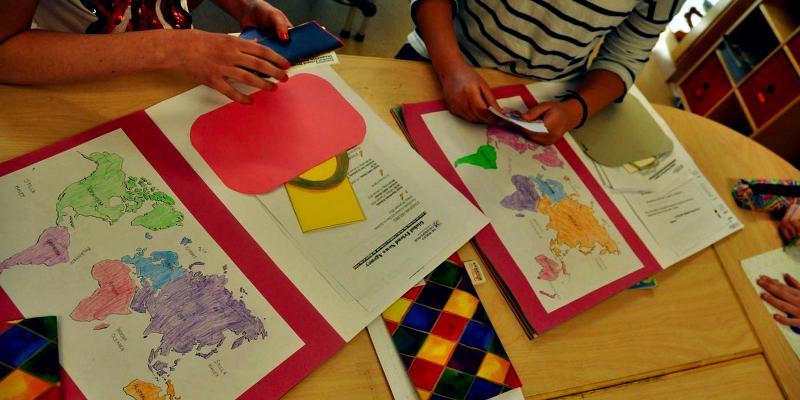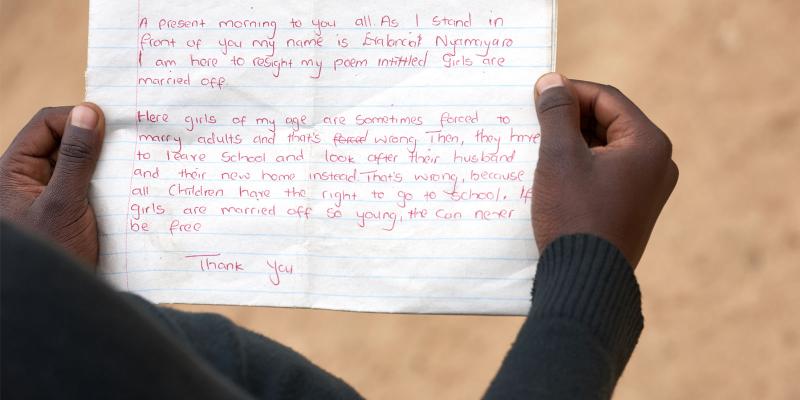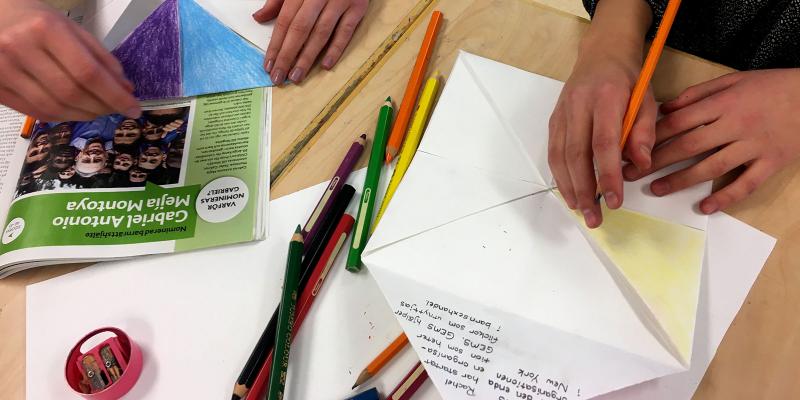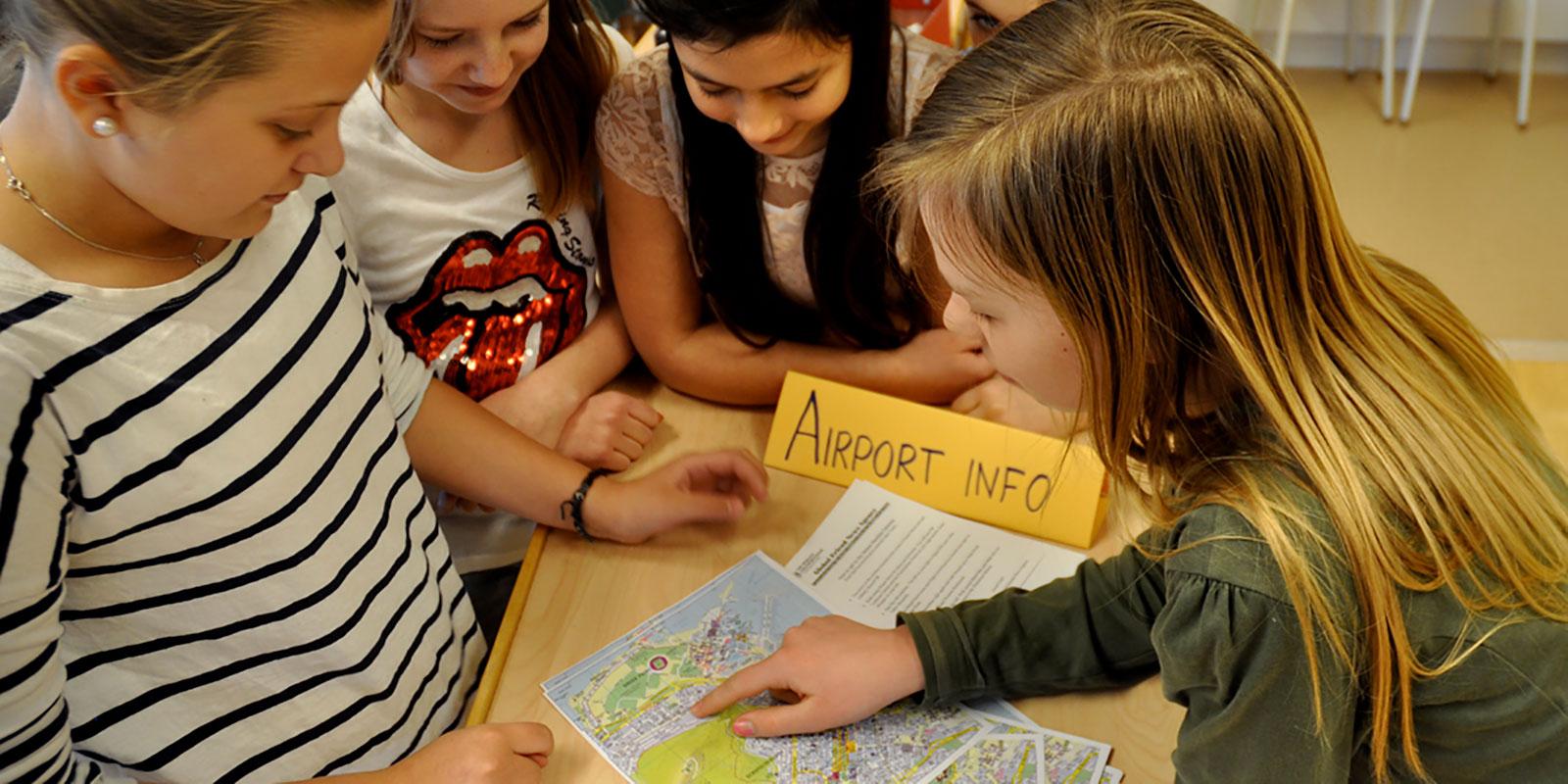
on arrival
Following the preparations and the flight, it is finally time to start the job in the destination country.
The assignments in each country are divided into three parts.
1. Arrival and tasks involving finding and visiting people and places.
2. Journalist assignments.
3. Assignments related to subjects such as maths, and problem solving based around the Child Rights Heroes and their countries.
The material produced will be presented in different formats upon arrival ‘back home’. Learn more about the presentations here
Arrival
The first activities are all about getting from the airport into town, exchanging currency, buying a meal and finding the hotel. These are simple activities that help the groups bond in preparation for the more complicated assignments.
The reporter assignments
Now it’s time for the reporters to head out and conduct interviews and reportage. The primary task is to interview a Child Rights Hero and the children whose rights she or he fights for. The tasks can also include learning about the culture, history and famous sights of the country. Formats can include creating articles and feature stories, short biographies as well as role playing for TV and radio-programs, skits and short plays.
Tips for new reporters
The reporters can make use of the WCP checklist and article template. These give tips on how to structure a story, which questions to ask, what information to include, and much more.
> Interview with a reporter
Illustrations
There are many different ways of illustrating interviews and reportage, for example:
• Paint and draw.
• Cut pics from newspapers or magazines, or copy/download from the internet.
Group work or individual tasks?
There are lots of different ways to approach the reporter assignments. Some simple tasks can be done individually. Larger assignments can be carried out in groups, for example using activities like role play. Students can work in pairs or in groups and
1. Read through the section of the prize magazine which their own story will build upon.
2. Choose roles. One can be the reporter and the other could be the prize nominee or a child.
3. Prepare to act out their roles. The reporter writes questions while the other students get to know their roles. They might need to pick out some lines from the text in the prize magazine or obtain more information from another source. Another student could be the ‘photographer’ and provide illustrations for the reportage.
Don’t forget the log/diary
The students began to write about their impressions and experiences in their diaries while on the flight. These diaries should be kept up to date. You, the teacher, should set aside some time for this activity. After each part of the journey, before the end of the lesson or the school day, the students should be given at least 10-15 minutes to write down their thoughts and reflections. What have they done today and what have they learned?
> More about working with logs/diaries
Text ©: The Global Trip is created by Maj Stoddard with inspiration from Jackie Lawson.
Topics
Related stories
Långgatan 13, 647 30, Mariefred, Sweden
Phone: +46-159-129 00 • info@worldschildrensprize.org
© 2020 World’s Children’s Prize Foundation. All rights reserved. WORLD'S CHILDREN'S PRIZE®, the Foundation's logo, WORLD'S CHILDREN'S PRIZE FOR THE RIGHTS OF THE CHILD®, WORLD'S CHILDREN'S PARLIAMENT®, WORLD'S CHILDREN'S OMBUDSMAN®, WORLD'S CHILDREN'S PRESS CONFERENCE® and YOU ME EQUAL RIGHTS are service marks of the Foundation.
